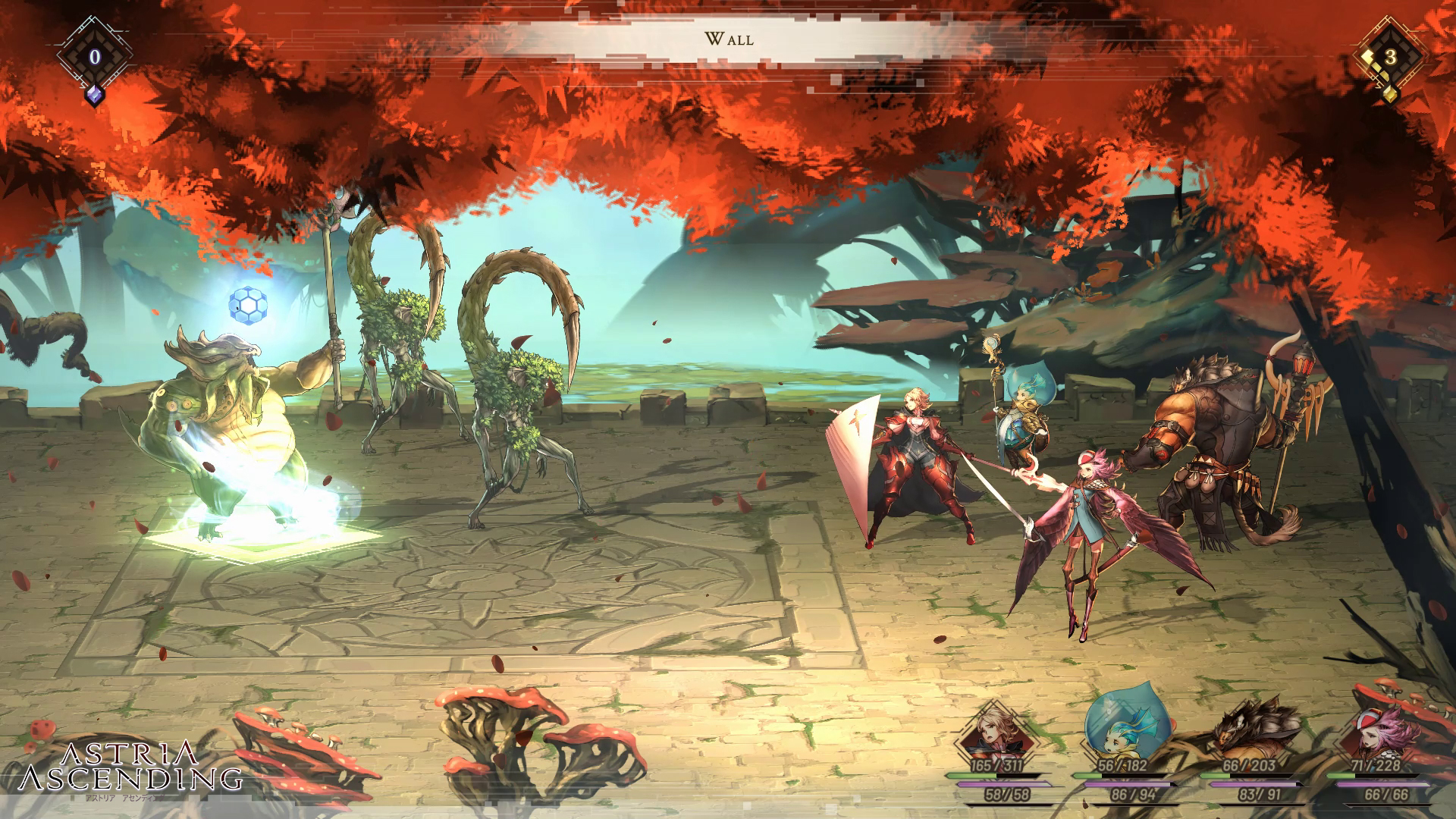

That may very well be Astria Ascending’s problem. The voice acting is well done too, though I personally had a hard time connecting to any of the main characters. Each hand-drawn environment is colorful and visually distinct. The environments and character designs are absolutely beautiful.

Astria Ascending has a lot of great ideas, and yet somehow I’m just left feeling unfulfilled. You can show enemy weaknesses by default, show enemy health by default, or turn those features off and play more traditionally using skills like scan to reveal those things. Luckily, the game has a variety of difficulty and accessibility options, along with the ability to save anywhere. It also means that if you die and have to watch a cutscene over, you can’t skip it. In other dialogue or side quest cutscenes you can move the dialogue at your own pace, so it is a weird choice to make story cutscenes different from that. However, one major issue is that in story cutscenes, the dialogue advances on its own, and there is no way to adjust the speed. There are lots of side quests, hunts for strong enemies, and other bits of side content involved. You can see doors/exits, teleport points, and other elements if you have the right skills equipped.

Each room you enter in a dungeon is a different square on the map. In that way, it is very much like Valkyrie Profile, and the map is very similar to Valkyrie Profile as well. You can make all sorts of party compositions as you progress, and there is a lot of room for varying playstyles.Īs for exploration, Astria Ascending takes place on a 2D hand-drawn plane, where you can move left and right, jump, and utilize the Zodiac Ring to freeze enemies or interact with the environment for puzzles. As a result of this system, there is a lot of customization at your fingertips. Stat nodes also require Stat orbs, which can be gotten from boss battles, chests, and things such as side quests. SP is gained through battles and is required to unlock nodes on the Ascension Grid. Each class has its own Ascension Grid, which is basically a mix between a skill tree and the Sphere Grid from Final Fantasy X. Each character starts out with one class and can eventually get a Main Class, Sub Class, and Support Class to go with it. Focus points can be used to enhance attacks, or lengthen the duration of buffs or debuffs. By hitting an enemy’s weakness, you can accrue focus points. However, in terms of gameplay, it is typical turn-based JRPG fare, aside from the Focus mechanic. Their imminent death doesn’t seem quite so impactful, because you have no connection to them. They’re all living on borrowed time, but since you start close to the end of their time as demigods, you have established relationships already with very little time to understand why they matter. You start with all 8 characters which (while refreshing) somewhat causes a narrative issue of feeling detached from the characters as a whole. The problem is, the game sort of throws you right into it. A mystery begins to unfold, as Noises begin to appear in Harmonia, which has never happened inside the city, only outside of it. You begin playing as the latest batch of 8 demigods, with only 3 months left before they die/transcend. In exchange for this limited lifespan, they gain a lot of power. However, this comes at a price, as demigods only live for 3 years before they “transcend”, dying and being replaced by new demigods.


 0 kommentar(er)
0 kommentar(er)
